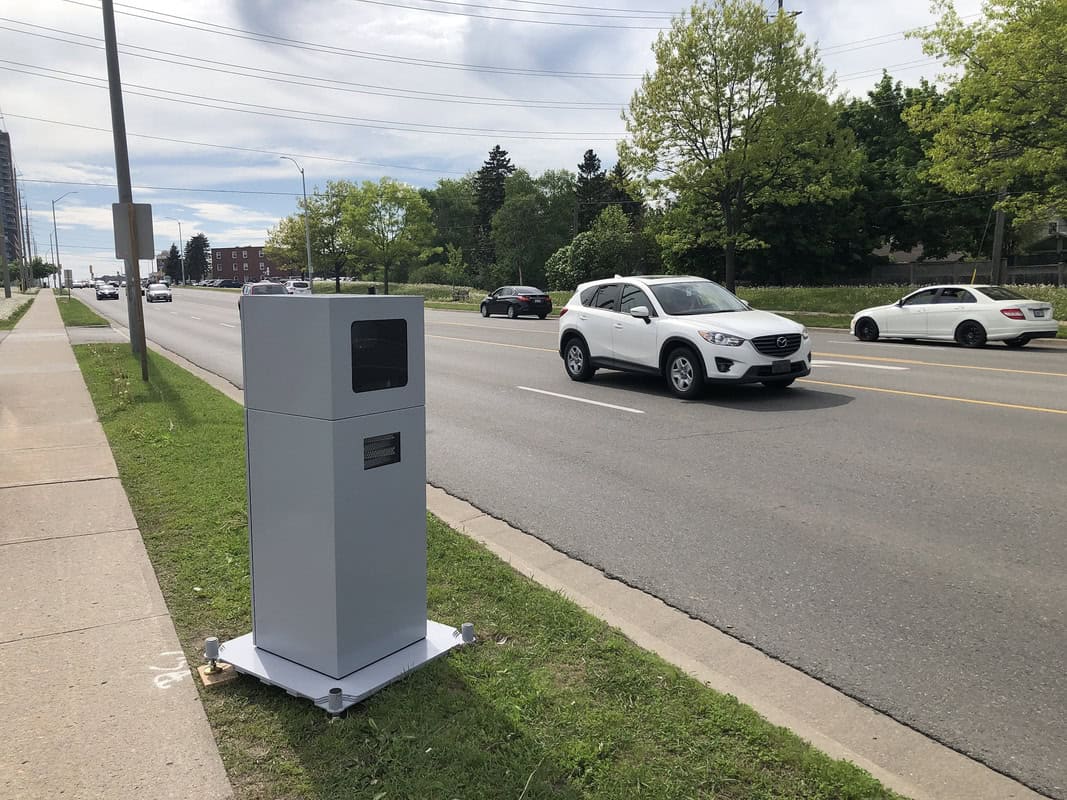Automated speed cameras could be coming to Oshawa streets
Published June 14, 2024 at 10:23 am

Slowing down drivers – especially in school zones – is the driving motive in a proposal to install Automated Speed Enforcement Cameras on some city streets in Oshawa.
A joint Safety & Facilities and Community & Operations committee agreed (by a 6-1 vote) to ask staff to investigate the implementation of the speed enforcement systems as a way to slow down speeders.
Automated speed cameras are already in Oshawa on regional roads, with permanent cameras at Simcoe Street between Taunton and Conlin roads near Ontario Tech University and on Harmony Road near Eastdale Collegiate, as well as six other locations in Durham Region. There are temporary cameras at various locations around the region as well, including Oshawa.
Speed is a contributing factor in approximately one third of fatal collisions in Canada and most municipalities agree reducing speed is the best way to reduce the frequency and severity of collisions.

Oshawa Councillor Jim Lee said traffic calming issues is one of the biggest issues he’s had to deal with in his first term of office and he believes installing the cameras will result in fewer accidents, less congestion and reduced insurance premiums.
Councillor Bradley Marks, the lone dissenter on the joint committee, said he didn’t think local municipalities should be “in the business” of speed enforcement and questioned the “wisdom” of getting involved with the program.
The Region believes the automated camera program is an “effective tool” to change driver behaviour, reduce vehicular speed and improve safety on roads, noting that the data collected so far has shown an eight km/h reduction in average operating speeds where the cameras were installed
The program has not been without its detractors, however, with Durham – as well as Ajax and Pickering, which have also implemented the program – all experiencing acts of vandalism to the cameras.
“Generally,” a report from Durham staff dryly noted, “members of the public who are not supportive of the program are those who are receiving offences.”

Brian Nicholson, who chaired the Oshawa committee meeting, said the “fastest way to put the program out of business is to obey the law. Where this has been installed it has been effective.”
Councillor John Gray said there are still several hurdles to cross – including associated costs – before the installation of the cameras on Oshawa streets can be considered a “done deal.”
“But this can help slow down traffic.”
Penalty revenue is used to recover the cost of the program, with any surplus revenues being re-invested in community safety efforts. It’s difficult to accurately predict program revenue (“due to the complex variables associated with driver behaviour”) but the program model is expected to at least break even, with all costs fully recovered.
The current penalties for speeding in community safety or school zones is on a sliding scale, starting at $5 per kilometre over the speed limit. For example, driving 16 km/h over the posted speed limit would result in a total penalty of $108.25.
The tickets would be sent to the owner of the vehicle, regardless of who was driving, and no demerit points would be issued.
Per provincial requirements, ‘Automated Speed Camera Coming Soon’ signs would be installed for 90 days to warn motorists of locations of the cameras.






